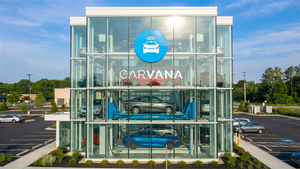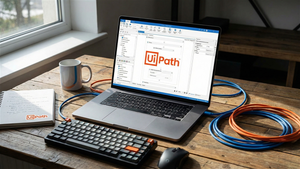
Fast-food company Yum China (NYSE: YUMC) fell short of the market’s revenue expectations in Q1 CY2025, with sales flat year on year at $2.98 billion. Its non-GAAP profit of $0.77 per share was in line with analysts’ consensus estimates.
Is now the time to buy YUMC? Find out in our full research report (it’s free).
Yum China (YUMC) Q1 CY2025 Highlights:
- Revenue: $2.98 billion vs analyst estimates of $3.1 billion (flat year on year, 3.7% miss)
- Adjusted EPS: $0.77 vs analyst estimates of $0.78 (in line)
- Adjusted EBITDA: $514 million vs analyst estimates of $538.7 million (17.2% margin, 4.6% miss)
- Operating Margin: 13.4%, in line with the same quarter last year
- Free Cash Flow Margin: 10.6%, up from 8.6% in the same quarter last year
- Locations: 16,642 at quarter end, up from 15,022 in the same quarter last year
- Same-Store Sales were flat year on year (-3% in the same quarter last year)
- Market Capitalization: $17.15 billion
StockStory’s Take
Yum China's first-quarter results reflected flat year-over-year sales, with management attributing performance to increased operational efficiency and ongoing product innovation across its KFC and Pizza Hut brands. CEO Joey Wat discussed the company's ability to sustain transaction growth, noting that menu enhancements and wider price ranges helped maintain customer engagement despite a challenging consumer environment. The company also expanded its store count, focusing on smaller formats and penetration into lower-tier cities.
Looking forward, management emphasized a cautious approach to guidance, citing a complex and evolving market backdrop. The company reiterated its aim for mid-single-digit system sales growth over the year while prioritizing value, operational simplification, and efficiency gains. CFO Adrian Ding stated that the focus remains on controlling costs and leveraging automation to offset wage inflation and delivery-related expenses, with no material impact anticipated from tariffs due to local sourcing.
Key Insights from Management’s Remarks
Yum China's leadership provided additional color on the factors shaping quarterly results and future priorities, highlighting how product innovation, cost control, and strategic expansion underpinned operating performance in Q1.
- Menu innovation and value focus: KFC introduced new spicy versions of its flagship chicken and expanded seasonal offerings, while Pizza Hut's refreshed menu targeted affordability and operational simplicity. These actions were designed to attract new traffic and improve restaurant margins.
- Delivery growth and digital channels: Both KFC and Pizza Hut saw double-digit year-over-year growth in delivery transactions, with management noting that over 70% of sales remain outside third-party platforms, preserving margin control and customer relationships.
- Smaller store formats and market reach: The company continued to grow its footprint, with 70–80% of new stores built in smaller formats for lower-tier cities. This approach enables faster expansion and lower capital investment while maintaining healthy payback periods.
- Operational efficiency through automation: Initiatives like Project Red Eye and Project Fresh Eye have streamlined kitchen operations, simplified menus, and centralized processes, driving cost savings and supporting stable margins despite rising delivery and labor costs.
- Brand marketing and customer engagement: Yum China leveraged collaborations with popular intellectual properties (IPs) and new brand concepts such as KCOFFEE Cafes and Pizza Hut WOW stores to broaden its customer base, especially among younger demographics.
Drivers of Future Performance
Management outlined a measured growth outlook for the rest of the year, citing consumer caution and macroeconomic uncertainty, while reaffirming its strategy of value, innovation, and operational discipline.
- Store expansion pace: The company aims to open 1,600 to 1,800 net new stores this year, focusing on smaller, more cost-effective formats, but expects a lower revenue contribution per store due to their size and ramp-up period.
- Menu and product innovation: Ongoing introduction of new menu items and product lines, including expanded beverage options and value meals, is expected to drive incremental traffic and appeal to price-sensitive customers.
- Margin management focus: Management anticipates modest improvement in cost of sales and intends to offset labor inflation with automation and operational simplification, but flagged potential headwinds from increased delivery mix and year-over-year comparisons in the second half of the year.
Top Analyst Questions
- Lillian Liu (Morgan Stanley): Asked about competitive pressures from delivery aggregators and consumer demand trends. Management replied that April trends were stable, with minimal impact from delivery competitors, and emphasized a watchful stance on market shifts.
- Michelle Cheng (Goldman Sachs): Inquired about Pizza Hut's same-store sales and margin trajectory. Management explained the positive effect of menu changes and noted that all-you-can-eat campaigns would impact quarterly margin phasing but reaffirmed the margin outlook.
- Brian Bittner (Oppenheimer & Co.): Sought insight into Chinese consumer sentiment and KFC’s transaction growth versus the industry. CEO Joey Wat highlighted continued transaction gains and market share growth, especially in delivery.
- Chen Luo (Bank of America): Questioned the lower revenue contribution from new stores amid rapid expansion. CFO Adrian Ding clarified that smaller stores and timing of openings explain the trend, noting that revenue contribution should normalize over time.
- Christine Peng (UBS): Asked about KCOFFEE’s expansion and store-level economics. CEO Joey Wat described strong growth potential, incremental sales benefits, and positive profit impact due to shared resources and equipment.
Catalysts in Upcoming Quarters
Looking ahead, the StockStory team will focus on (1) the pace and profitability of store expansion, particularly in lower-tier cities and with new concepts like KCOFFEE Cafes, (2) the sustainability of same-store transaction growth and margin management amid evolving consumer trends, and (3) further evidence of automation and menu innovation translating to cost savings. We will also monitor competitive dynamics in delivery and digital channels as key factors for future performance.
Yum China currently trades at a forward P/E ratio of 16.8×. Should you load up, cash out, or stay put? Find out in our free research report.
The Best Stocks for High-Quality Investors
The market surged in 2024 and reached record highs after Donald Trump’s presidential victory in November, but questions about new economic policies are adding much uncertainty for 2025.
While the crowd speculates what might happen next, we’re homing in on the companies that can succeed regardless of the political or macroeconomic environment. Put yourself in the driver’s seat and build a durable portfolio by checking out our Top 9 Market-Beating Stocks. This is a curated list of our High Quality stocks that have generated a market-beating return of 176% over the last five years.
Stocks that made our list in 2020 include now familiar names such as Nvidia (+1,545% between March 2020 and March 2025) as well as under-the-radar businesses like the once-micro-cap company Tecnoglass (+1,754% five-year return). Find your next big winner with StockStory today.






